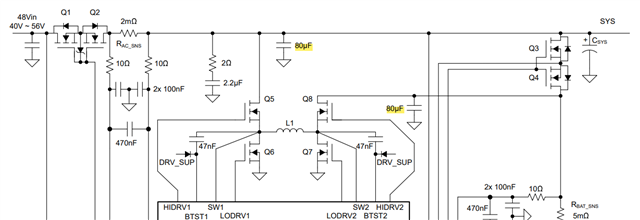Other Parts Discussed in Thread: BQ24610, BQ25756
Tool/software:
Hi team,
When designing BQ25750, there is a question: the location of the input and output capacitors. There is no clear requirement in the specification. The following screenshot:

However, in actual use, the current detection before and after Rsen represents the average (input/output) current, or the inductor current.
Compared with BQ24610, Rsen is required to be placed after the capacitor for cycle-by-cycle detection, enter the dcm mode, and reduce power consumption.
My questions are:
1. Does BQ25750 have no requirements for the location of the input and output capacitors?
2. Will BQ25750 maintain BCM mode under PFM? Then is it through SW zero-crossing voltage detection or sen resistor zero-crossing current detection
BRs,
Rannie



